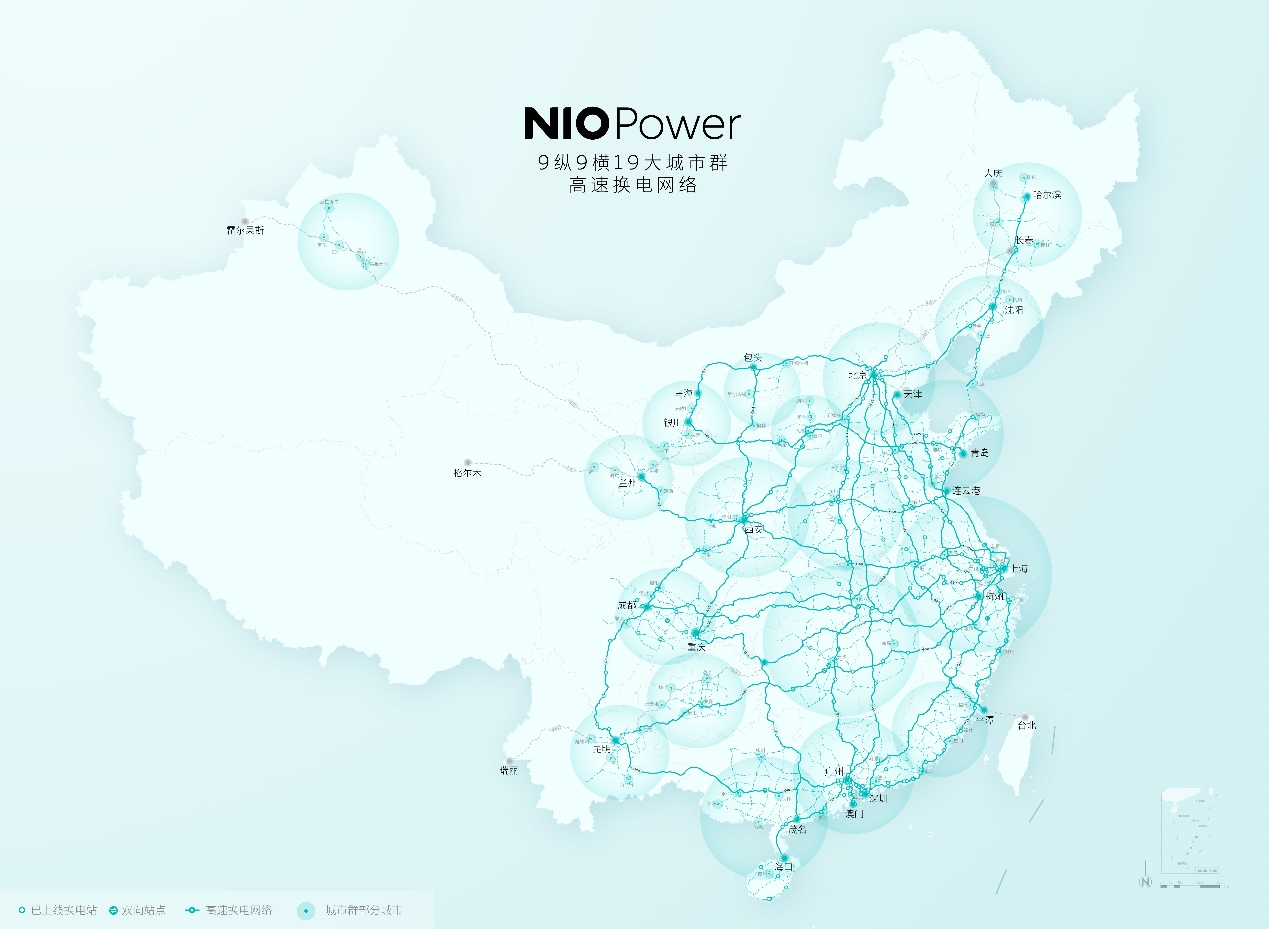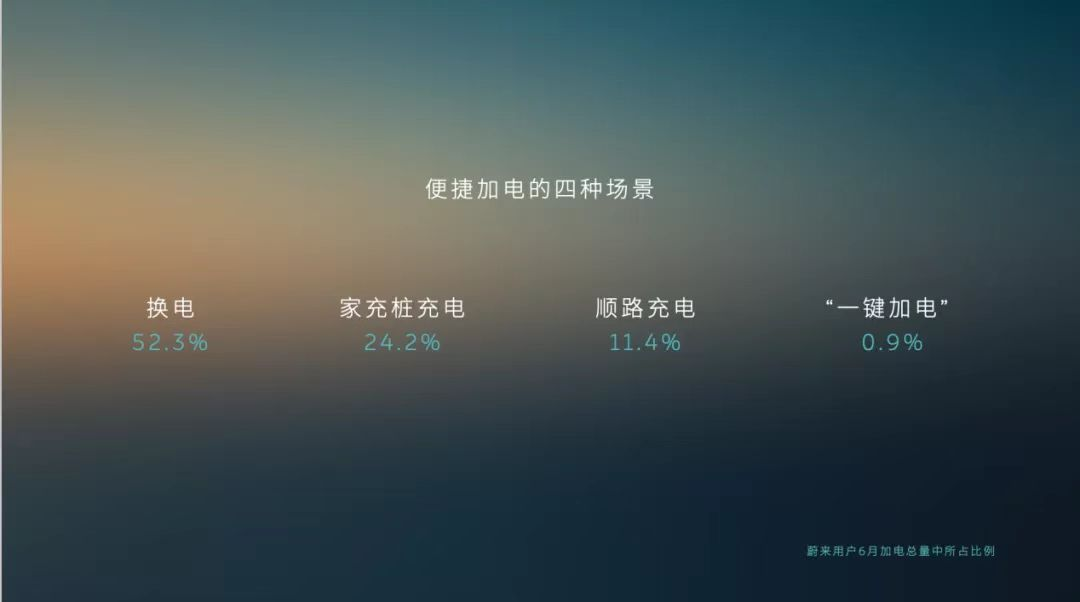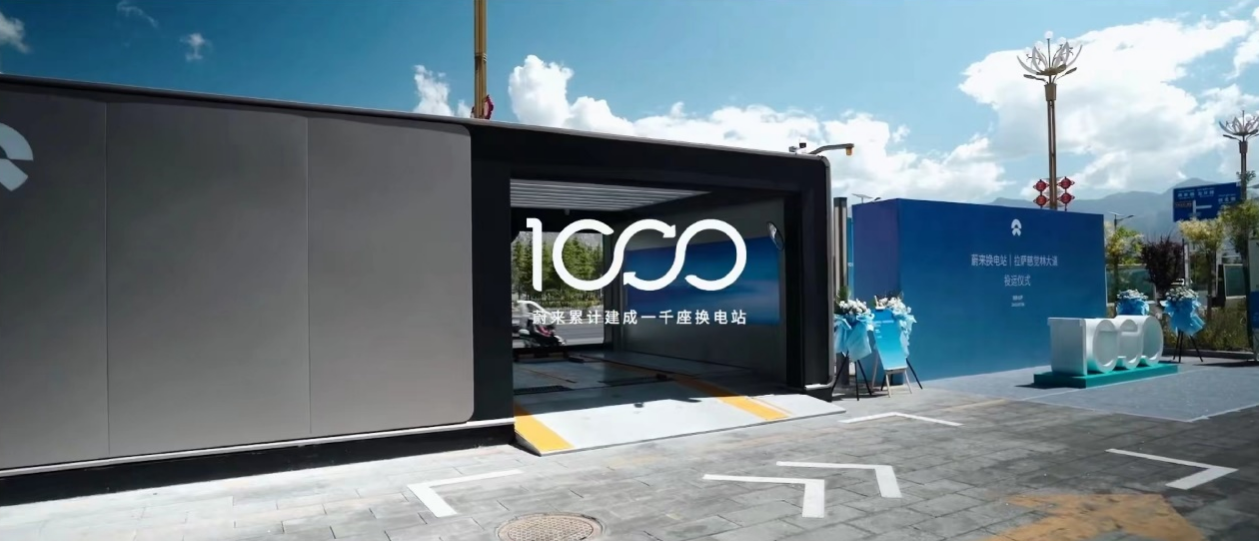Author: Zhang Yi
Regardless of one’s opinion on NIO’s brand, it is undeniable that NIO is the undisputed leader in the high-end pure electric vehicle market, and is also the breakthrough-maker of Chinese high-end brands. How did NIO achieve such extraordinary success?
The answer is battery swapping. Despite battery swapping having a history of over a hundred years (“CATL opens up the battlefield of battery swapping”), thanks to the breakthrough in high-density lithium-ion battery technology, many brands have abandoned battery swapping while NIO persisted in promoting battery swapping systems to the most challenging consumer group. Although battery swapping involves high-cost operations for NIO, it has also achieved NIO’s current position in the high-end pure electric vehicle market.
Recently, Qin Lihong, the founder of NIO, stated that as long as NIO exists, battery swapping will continue.
Starting again at an altitude of 5,000 meters with NIO’s battery swapping
On July 6, NIO put into operation a battery swapping station on the Cijuelin Road in Lhasa, Tibet, located at an altitude of 5,000 meters. Unlike other battery swapping stations, this station is the world’s first battery swapping station that is 100% powered by clean energy, utilizing renewable and clean energy sources such as photovoltaics and hydroelectricity in Tibet. Moreover, this is NIO’s 1,000th battery swapping station, which is particularly meaningful for NIO.
Since 2018, NIO’s battery swapping system has undergone a tumultuous four years and has faced both doubts and encouragement. Regardless, NIO’s battery swapping continues to start again at an altitude of 5,000 meters.
On this remarkable July 6, in addition to the battery swapping station in Lhasa, NIO also put 12 new battery swapping stations into operation. As of July 6, NIO has built a total of 1,011 battery swapping stations nationwide.
Also on this day, NIO held NIO Power Day 2022 and launched a new plan for NIO Power High-Speed Battery Swapping Network construction: NIO will build a high-speed battery swapping network covering the nine vertical and nine horizontal national city clusters by 2025. By then, NIO will have 4,000 swapping stations, covering almost everywhere people can go.

However, NIO’s battery swapping network still faces two major difficulties.
As long as NIO exists, battery swapping will continue
In NIO’s definition of four convenient charging scenarios, battery swapping accounts for 52.3%. Therefore, to NIO, the most important way to eliminate mileage anxiety for consumers is to build more battery swapping stations. As NIO’s brand influence continues to grow and its user base continues to expand, this demand will continue to increase.
 In the face of the contradiction between growing demand for battery swapping from users and insufficient infrastructure, Nio once proposed the grand vision of “making charging more convenient than refueling”.
In the face of the contradiction between growing demand for battery swapping from users and insufficient infrastructure, Nio once proposed the grand vision of “making charging more convenient than refueling”.
However, from the development process of gas stations in China over the past few decades and the current over 119,000 gas stations in the country, it can be seen that achieving nationwide convenience for charging over refueling is an extremely laborious and time-consuming task for a single company.
If the entire industry unites and concentrates its efforts on this large-scale endeavor, the expansion of battery swapping networks is sure to be twice as effective with half the effort. However, there are still two divergent thoughts on charging in the industry: vehicle and battery separation, and integration. Even brands that advocate for vehicle and battery separation, like Nio, are still in a state of individualism.
Even if Nio welcomes other brands to jointly build the battery swapping system with an open attitude, there are still many contradictions such as commercial models and management structures. Therefore, Nio, as a pioneer, has to continue to forge ahead in a high-profile and lonely manner, step by step.
Nio CEO William Li once said, “As long as Nio is present, we will always be committed to battery swapping, even beyond user demands.”
Giving Battery Swapping Intelligent Wings
The expansion of the battery swapping network is a major challenge. In the process of building one battery swapping station after another, good operation and maintenance is another major challenge.
Based on the AIoT technology of the Nio Energy Cloud, Nio can respond to this challenge from the perspective of big data. The Nio Energy Cloud has three main functions: intelligent planning, intelligent location selection, and intelligent operation and maintenance.
Firstly, intelligent planning. The Nio Energy Cloud can plan the basic layout of the battery swapping station reasonably by analyzing users’ authentic travel scenarios, driving distances, and other factors.
Secondly, intelligent location selection. Based on the demands of surrounding users for battery swapping, as well as the load state and space distance of the swapping station, the Nio Energy Cloud can intelligently select the location for battery swapping station construction.
Finally, intelligent operation and maintenance. After the battery swapping station is officially put into operation, the Nio Energy Cloud can remotely monitor it and perform safety testing, diagnosis, and other operation and maintenance tasks.
The Voice of Electric Power
Currently, the fastest battery swapping speed of Nio’s swapping station has reached 90 seconds, which is almost equivalent to that of gas stations.
Moreover, at NIO Power Day 2022, Nio also revealed that it will gradually release new charging devices such as liquid-cooled super fast charging piles with a peak power of 500kW and a peak current of 650A, as well as third-generation battery swapping stations. It also announced that it will open up the 800V high-voltage platform battery pack and supporting battery swapping system to the entire industry.Although the expansion of battery swapping stations will bring great financial and operational pressure to NIO, NIO’s CEO, William Li, has stated that “NIO’s current lack of profitability is not due to battery swapping. Tesla did not pursue battery swapping, and it took the company more than a decade to become profitable.”
From finance to public opinion, continuously expanding the deployment of battery swapping stations will not make NIO feel at ease in the near future. However, the flip side of the coin is that if NIO firmly adheres to the path of battery swapping, combined with meticulous user operations, it will bring more precious growth and strategic time to NIO, as obtaining users means obtaining the world. This has undoubtedly been proven.
This article is a translation by ChatGPT of a Chinese report from 42HOW. If you have any questions about it, please email bd@42how.com.
